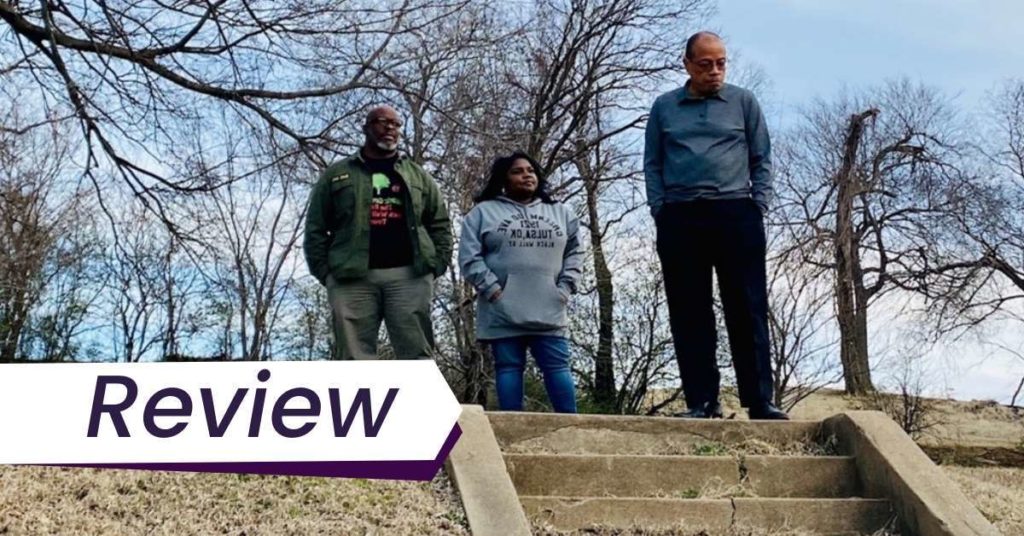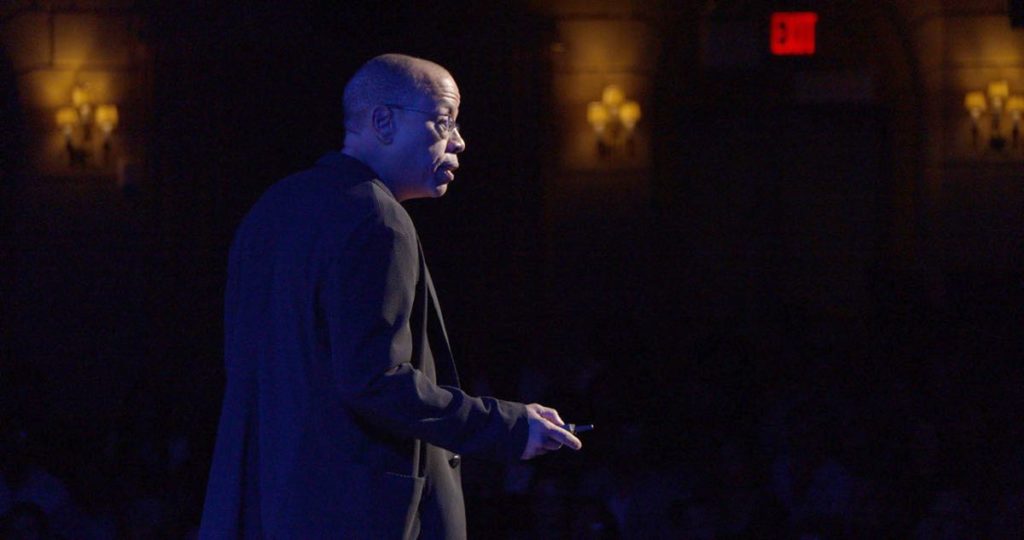In the documentary Who We Are: Chronicle of Racism in America, ACLU Deputy Legal Director Jeffery Robinson guides us through the history of racism in America through primary documents and site visits both personal and political.
Who We Are: Chronicle of Racism in America is available across Canada until May 9. Get tickets to Who We Are: Chronicle of Racism in America here.
Read all of our HotDocs coverage here.

Discover one film you didn’t know you needed:
Not in the zeitgeist. Not pushed by streamers.
But still easy to find — and worth sitting with.
And a guide to help you do just that.
ACLU Deputy Legal Director Jeffery Robinson’s presentation about the history of racism in the US forms the backbone for the documentary Who We Are: Chronicle of Racism in America. But the film is more than just doing for racism and white supremacy what An Inconvenient Truth attempted to do for climate change. Written by Robinson and directed by Emily and Sarah Kunstler, the film is very much Robinson’s story. Because Robinson is an incredibly compelling speaker with a personal stake in the topic, he finds a way to make the story feel specific and personal without either making the audience feel bad about themselves or falling too much into personal interpretation.
In the vein of Ava DuVernay’s 13th, about how slavery has merely transformed into mass incarceration of Black people in the US, Who We Are: Chronicle of Racism in America takes us back 400 years in history to understand America’s white supremacist roots. In his presentation, Robinson meticulously quotes from primary documents, so that we, as an audience, can interpret first-hand how ingrained white supremacy has always been in American culture and institutions. In so doing, Robinson avoids preaching at every stage, even if a film with this particular title might be targeted more at the converted than the avid Richard Spencer followers.
Nevertheless, the film does effectively target people who may not consider themselves personally racist but also may not understand the racist system and society in which they live and participate. Robinson doesn’t just tell you that racism is structural, but he shows the receipts. He shows us the words used to write it into law. At every stage of the presentation, co-directors Emily and Sarah Kunstler pause the proceedings to follow Robinson on the ground, observing how structural inequalities affect individuals. In an early scene, they show us the degree of Robinson’s compassion and patience when he engages with a confederate supporter and protester who continues to deny the violence of slavery.

Robinson’s tour around America outside of the presentation is both personal and political — a discovery for Robinson as much as for us. When he visits a museum about the history of slavery, the museum guide shows both us and him the shackles used on children of enslaved people at the market; in his presentation, Robinson explains how laws had to be made to account for these children and prevent them from gaining power when they were often the result of white rapists. Taking a walking tour of New York City, his guide illuminates how New York wasn’t just the centre of northern economics, but also was interested in the slave trade long after the city itself had abolished slavery. Robinson then shows us the evidence of New York’s reluctance to join the union in the Civil War.
On a more personal level, Robinson meets up with friends from his past who were witness to the same structural racism that he and his family faced. We learn that he was only able to get the strong, newly integrated education that he did because his family bought a house in a white neighbourhood — with the help of white friends. We also learn that this is a fact that Robinson only learned fairly recently, though he reveals memories of the racist treatment he received from neighbours at the time. In one of the film’s most moving scenes, Robinson meets up with a white elementary school friend and their coach, and the two former students learn for the first time how their coach protected and shielded them from cruel sentiments expressed by their opponents at a tournament. All three of them end up in tears both out of gratitude for the coach’s work to shield them and heartbreak that this was necessary at all.
You could be missing out on opportunities to watch great films like the documentary Who We Are: A Chronicle of Racism in America at virtual cinemas, VOD, and festivals.
Subscribe to the Seventh Row newsletter to stay in the know.
Subscribers to our newsletter get an email every Friday which details great new streaming options in Canada, the US, and the UK.
Click here to subscribe to the Seventh Row newsletter.
Get the ebook all about documentary filmmaking!
Discover great interviews with documentary filmmakers
Over and over, we drop you into the minds of some of today’s most influential documentarians.

